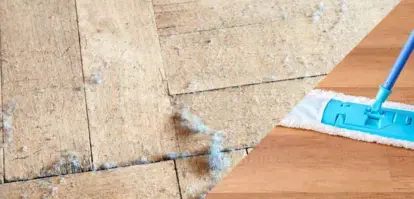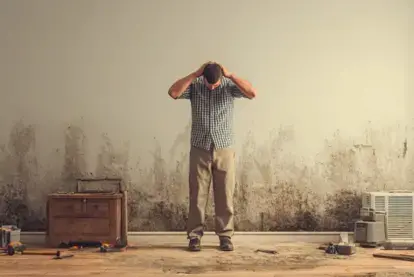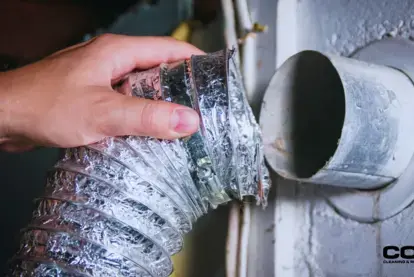
How Often Should You Dust Your Home?
Contact COIT for a professional cleaning!
Did you know that 500 dust mites can survive on one gram of dust?
Dust, the tiny particles that float around our homes and settle on surfaces, is made up of organic and inorganic materials such as dead skin cells, pet dander, soil, pollen, bacteria, and mold. Wondering what a dust mite’s diet consists of? Skin flakes and mold. Considering the average household collects around 40 pounds of dust per year, that’s a lot of food for mites. Yikes!
A reported 20 million Americans suffer from dust mite-related allergies, which can cause respiratory issues, sneezing, and congestion. The bottom line—breathing in dust is harmful, which is why it’s important to clean regularly to maintain a healthy living environment for you and your family.
If, like us, you prefer your home dust-mite-free, then read on for some helpful clean home tips regarding how often you should dust your home, improving indoor air quality, and reducing allergens related to dust.
The Importance of Maintaining a Regular Dusting Schedule
Dust is inevitable, and while combating dust for good is an impossible battle, there are ways to be proactive in your efforts to limit the amount that exists within your home.
One of the best ways to reduce the amount of dust is by establishing and maintaining a regular dusting schedule. By creating healthy cleaning habits and sticking to them, you will not only help mitigate the possibility of dust-related health concerns, but you will also better protect your home’s interior from damage brought on by dust.
How Dust Affects Your Health
Breathing in small particles of dust, which can contain harmful bacteria and even microplastics, is irritating for our lungs. This is why, when we inhale dust, our bodies exhibit allergic reactions and try to expel the unwanted particles by sneezing or coughing them out.
Although many claim to have a dust mite allergy, the mites themselves are not what cause these allergic reactions. In fact (and unfortunately) it is the waste produced by these mites that causes allergic reactions such as sneezing, itching, nasal congestion, and, in some cases, asthma attacks. If that doesn’t make you reach for your duster, we’re not sure what will.
How Dust Affects Your Home
Beyond health concerns, dust accumulation can impact your home, namely in regards to your air quality and HVAC system. Dust floating around your home will eventually work its way into your air duct system. Without being treated, this dust can grow mold, which is not only bad to inhale, but can also clog and damage your HVAC system, leading to potential repairs down the line.
Dust also has a habit of clinging to blinds and drapery, so while you make your way through your home wiping down and dusting surfaces, don’t neglect your blinds and curtains.
Quick Reasons to Maintain a Regular Dusting Schedule:
- Dust contains small particles, both organic and inorganic, which can be irritating to our lungs when inhaled
- When we breathe in dust, our bodies attempt to expel them by sneezing and coughing
- Waste produced by dust mites causes allergic reactions when inhaled
- Dust in the home can exacerbate asthma symptoms
- Accumulated dust in HVAC systems can grow mold, clog, and cause long-term damage to the system
So if you’re thinking about skipping out on dusting, reconsider. When we don’t dust our homes, it collects—and fast. The best way to keep dust at bay is by routinely and thoroughly dusting. The following sections will cover the best dusting techniques for maintaining home cleanliness.
Dusting 101
The average home needs to be dusted weekly. That said, certain factors such as pets, local climate, household occupancy/foot traffic, and specific rooms will affect dust levels and dusting frequency.
Pets
Pet dander is a main contributor to dust. For homes with pets, experts recommend dusting more frequently than those without. In an experiment in which dust was collected from over 1,000 homes and put under a microscope, researchers could pinpoint whether a household owned cats or dogs simply based on the microbes found within the samples.
Beyond dander, dogs and cats carry around different sets of bacteria not found in homes without pets. To further reduce the amount of dander and bacteria in your home, regularly grooming pets is also recommended.
Climate
Dust accumulates faster in dry areas than in humid ones. In dryer climates, dust particles tend to remain airborne because they aren’t weighed down by moisture, allowing them to circulate more easily throughout the home. Beyond dusting more frequently, those who live in dryer climates may consider using a humidifier to weigh down some of the dust particles floating about.
Foot Traffic
Because dirt and dead skin cells are also among the main contributors of dust, the more people you have coming in and out of your home, the more dust will accumulate. So, for those with large families or frequent guests, you may find that you will need to dust more often than those who are living on their own.
Type of Room
If you’re wondering which rooms collect the most dust, consider the following. According to the National Center for Healthy Housing, “Dust mites thrive in places where dead skin cells are most likely to be found: on mattresses, pillows, bedcovers, carpets, upholstered furniture, stuffed toys, clothes, or other fabric items in the home.” So, while some areas of the home can go longer without thorough dusting, we suggest dusting your bedroom more frequently than other rooms.
Best Tools and Dusting Techniques
When it comes to efficient and effective dusting, you’ll want to use the best dusting tools and follow proven home cleaning advice. Common dusting tools include microfiber cloths, lambswool dusters, feather dusters, synthetic dusters, and extendable dusters. These tools will not only help you successfully trap dust within the tool’s fibers or feathers, but also help you access hard-to-reach places.
Best Methods for Dusting
Expert cleaners suggest a top-down approach to dusting, meaning you should start with higher, hard-to-reach places (windowsills, tops of refrigerators, ceiling fans, etc.) and then make your way down to lower surfaces. When we dust, we wind up moving dust around in the process. By starting with the higher levels first, you are ensuring that any dust that falls as a result of this initial dusting will be cleaned later as you work your way down.
COIT Pro Tip
We strongly recommend dusting before vacuuming. As mentioned, when you dust you wind up shaking more loose, which causes it to travel and land on nearby surfaces. To avoid having to clean twice, save the vacuuming until after you’ve finished dusting.
DIY Dust Cleaner
To help reduce dust levels there are a few DIY spray options available that you can make from ingredients you likely already have at home. Simply combine 1 cup of water with 1/4th cup of vinegar, 2 tbsp of coconut oil (or olive oil), and 4 drops of lemon oil in a spray bottle. After dusting, spray this on surfaces to help repel future dust.
Although dusting your home regularly is the simplest trick to eliminate dust and keep your household allergy-free, there are other ways to combat dust such as using doormats to reduce dirt, keeping air ducts/HVAC systems cleaned, or calling in the professionals to get the job done for you.
To keep your home or commercial space dust-free, schedule a professional cleaning service with COIT today.



